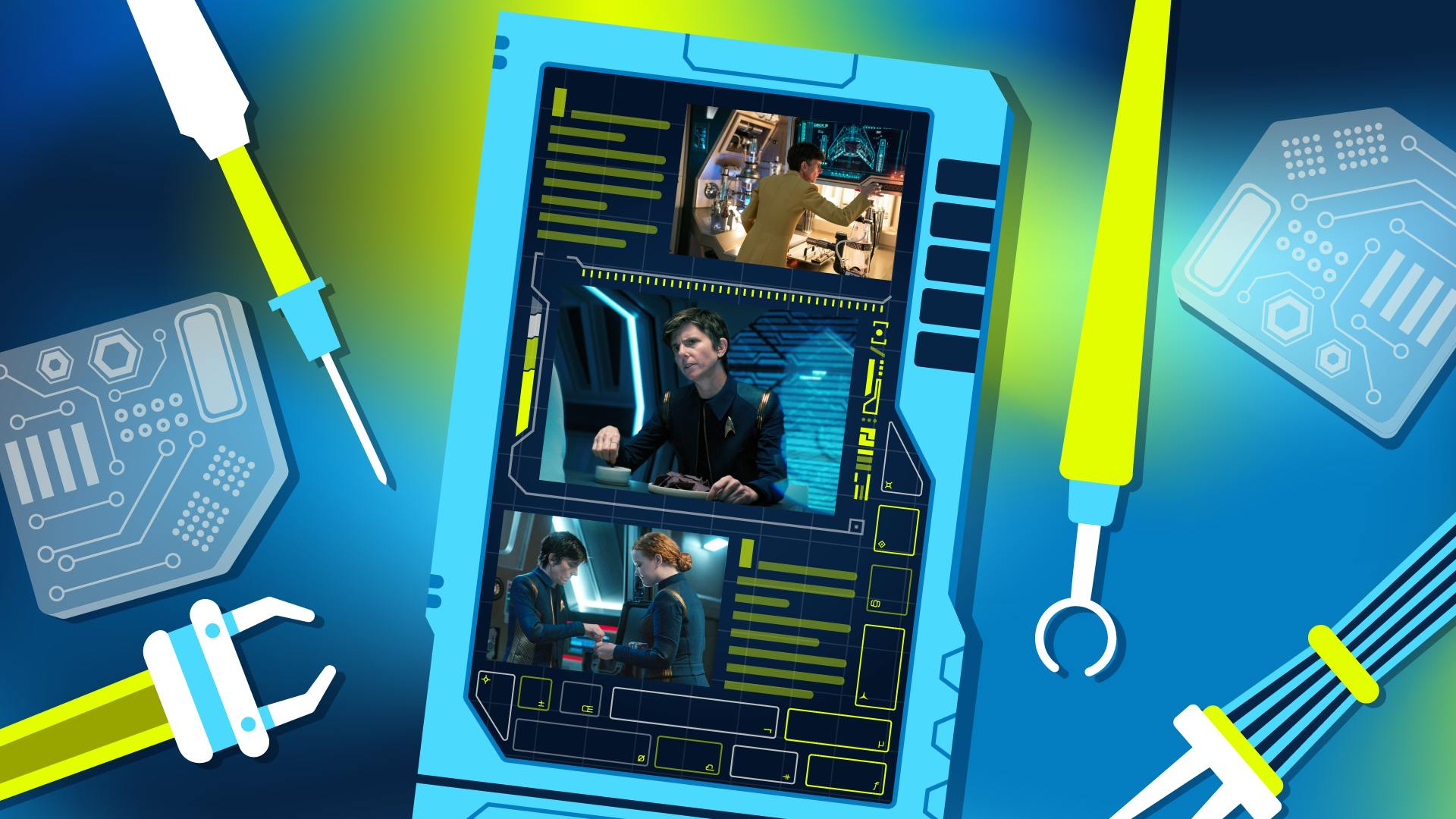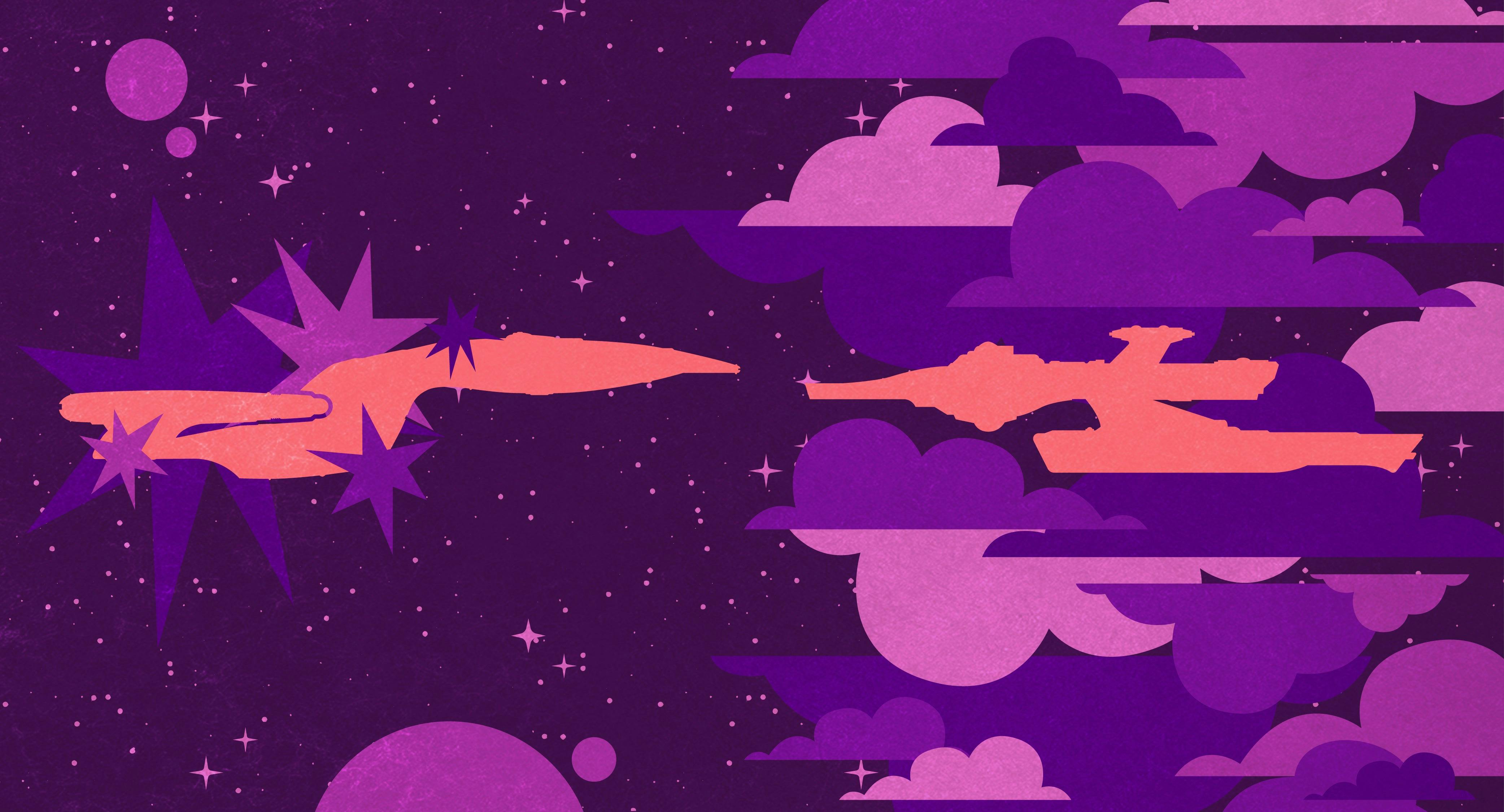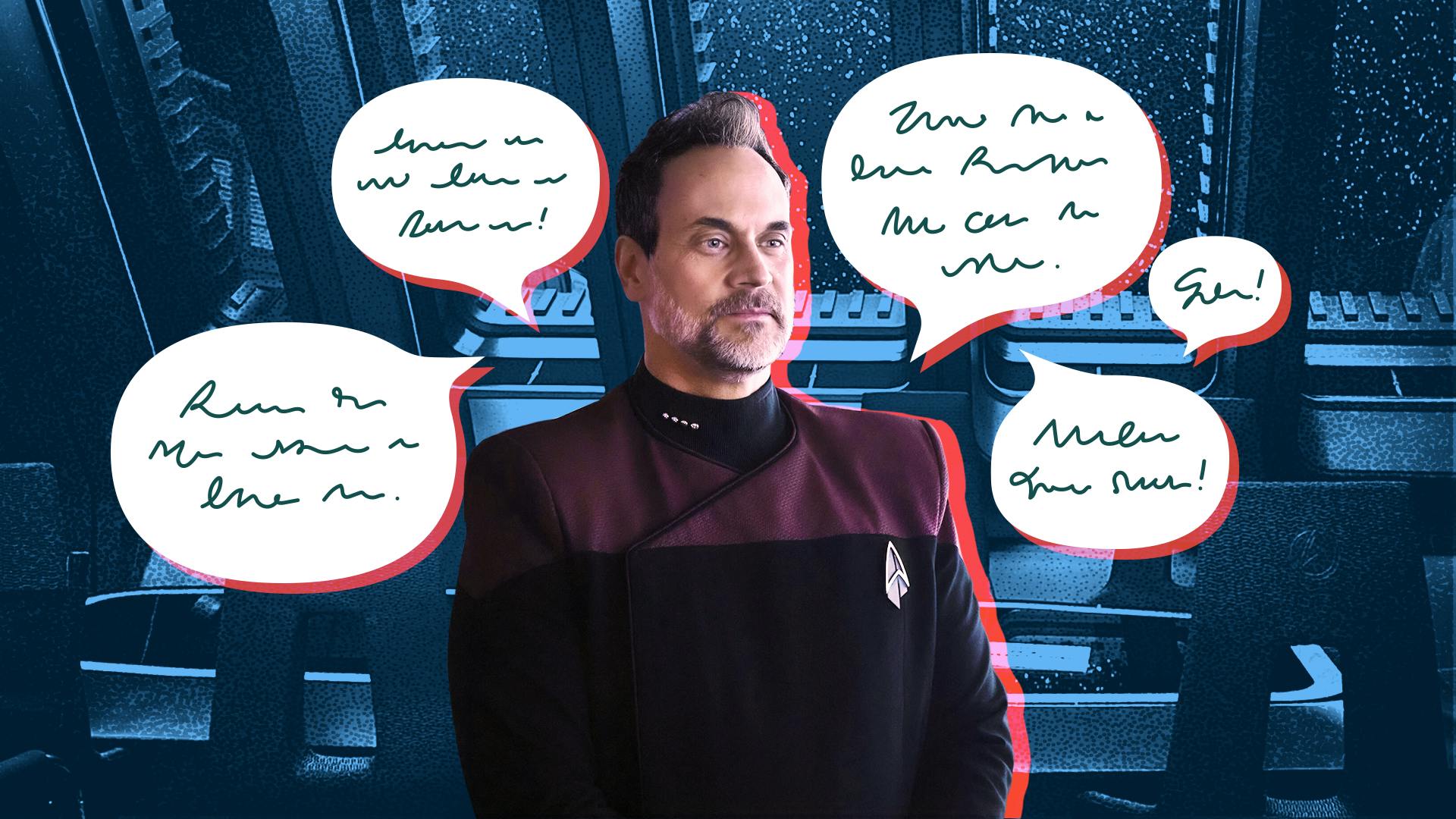Published Jun 8, 2022
How The Day the Earth Stood Still Informs Star Trek: Strange New Worlds
The classic film's appearance in the series premiere goes deeper than just being an Easter egg

StarTrek.com
In the first episode of Star Trek: Strange New Worlds, “Strange New Worlds,” Captain Christopher Pike (Anson Mount), Science Officer Spock (Ethan Peck), and acting Number One La’An Noonien-Singh (Christine Chong) beam down to the planet Kiley 279. Thanks to the procedure performed by Nurse Chapel, the fact that they are human is disguised, allowing them to walk among the Kiley undetected.
After La’An incapacitates a pair of guards, she suggests the Enterprise “abduct” them: after all, the only negative effects will be that the Kiley guards will only experience some lost time if they are placed in medical sedation. As La’An makes this suggestion, the score by Nami Melumad features the trembling and distinctive sound of the theremin. The fact that the sound is so closely connected in the popular imagination with the idea of Unidentified Flying Objects has its origins in the soundtrack of the 1951 science fiction classic The Day the Earth Stood Still… and that’s far from the only way that the seminal film has had an influence on SNW.
The Day the Earth Stood Still
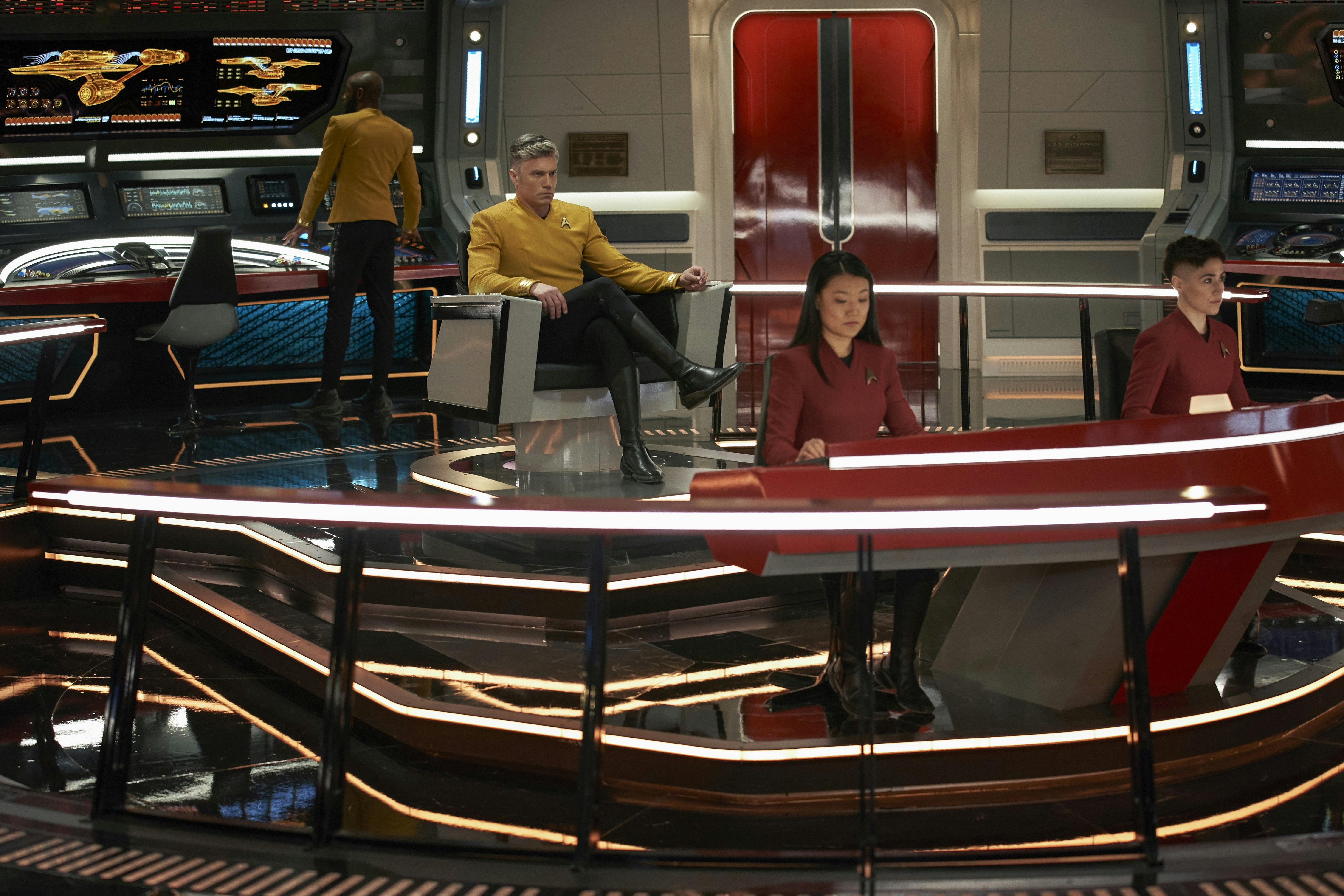
StarTrek.com
Robert Wise directed The Day the Earth Stood Still from a screenplay by Edmund H. North, which was adapted from a short story by Harry Bates. Wise, who went on to direct Star Trek: The Motion Picture three decades later, accepted the directing job for The Day the Earth Stood Still based on the strength of the screenplay: not just its story and characters, but also the themes it contained.
The story begins with a fourth-wall shattering sequence in which an UFO circles the globe, a montage that features appearances by many contemporary real-world journalists (whose faces and voices would be recognized by audiences in 1951). When the saucer lands in Washington, DC, a spacesuit-clad figure named Klaatu (Michael Rennie) emerges and is immediately shot by military forces. This causes a second occupant, Gort (Lock Martin), to emerge from the UFO. Klaatu asks Gort to stand down as he is taken to a hospital for treatment.
Earth authorities subsequently detain Klaatu, but he escapes and adopts the identity of a human named “Carpenter.” Klaatu briefly poses as a human and learns more about our violent and war-torn society. However, his true identity is eventually revealed, and he is killed attempting to evade authorities. Thanks to the effort of a human, Helen Benson (Patricia Neal), Klaatu is returned to the saucer.
Gort uses a device that is able to temporarily revive Klaatu, and he appears before a crowd gathered around his ship to deliver a climactic message. He informs the people of Earth that Gort is a member of a robot force constructed by the citizens of the galaxy to enforce universal peace. “There must be security for all or no one is secure,” Klaatu tells the people of Earth. It’s out of any one individual’s hands: Gort and the rest of the force will destroy Earth if humans cannot renounce violence and learn to live in peace.
A Message from Above
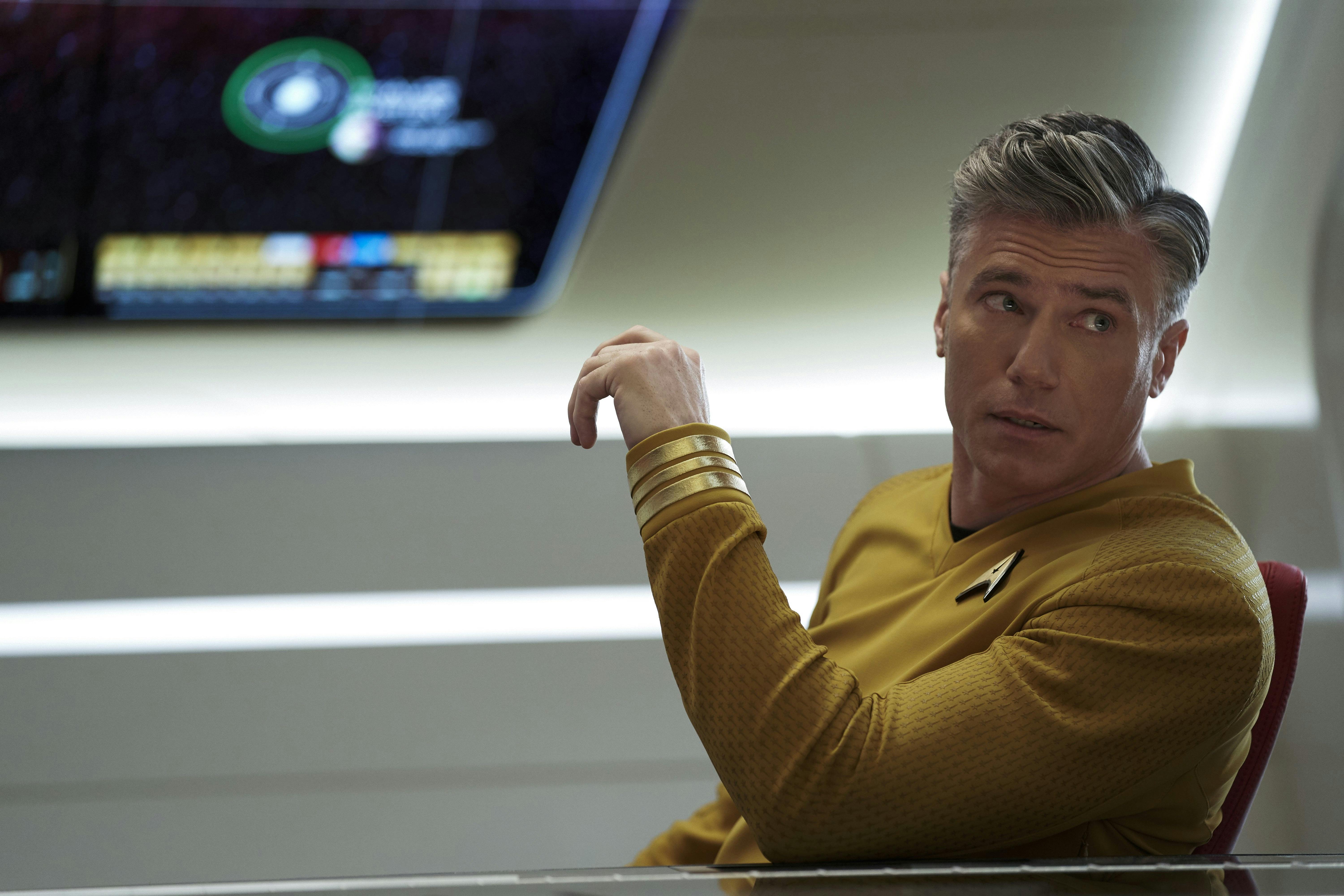
StarTrek.com
In a commentary track for The Day the Earth Stood Still, Nicholas Meyer, the writer and director of Star Trek II: The Wrath of Khan conducted an interview with Wise about the 1951 film. In addition to the story and themes, Wise asserts that there was another reason he was so enthusiastic about making the film.
“I’ve always been a strong believer in UFOs, in the existence of UFOs,” Wise told Meyer. Wise went on to explain the idea of an extraterrestrial intelligence coming to Earth and proving not to be a monster but rather a harbinger of peace appealed to him.
According to Space and the American Imagination by Howard E. McCurdy, UFO sightings by Americans began in 1947. In the wake of the events that occurred in Roswell that year, societies centered on the idea that extraterrestrial visitors had arrived to save Earth from destruction began to arise. But these heralds were not supernatural in nature. McCurdy writes, “[UFOs] were the product of advanced science, evidence of the length to which technology could carry a civilization.”
Strange New Worlds
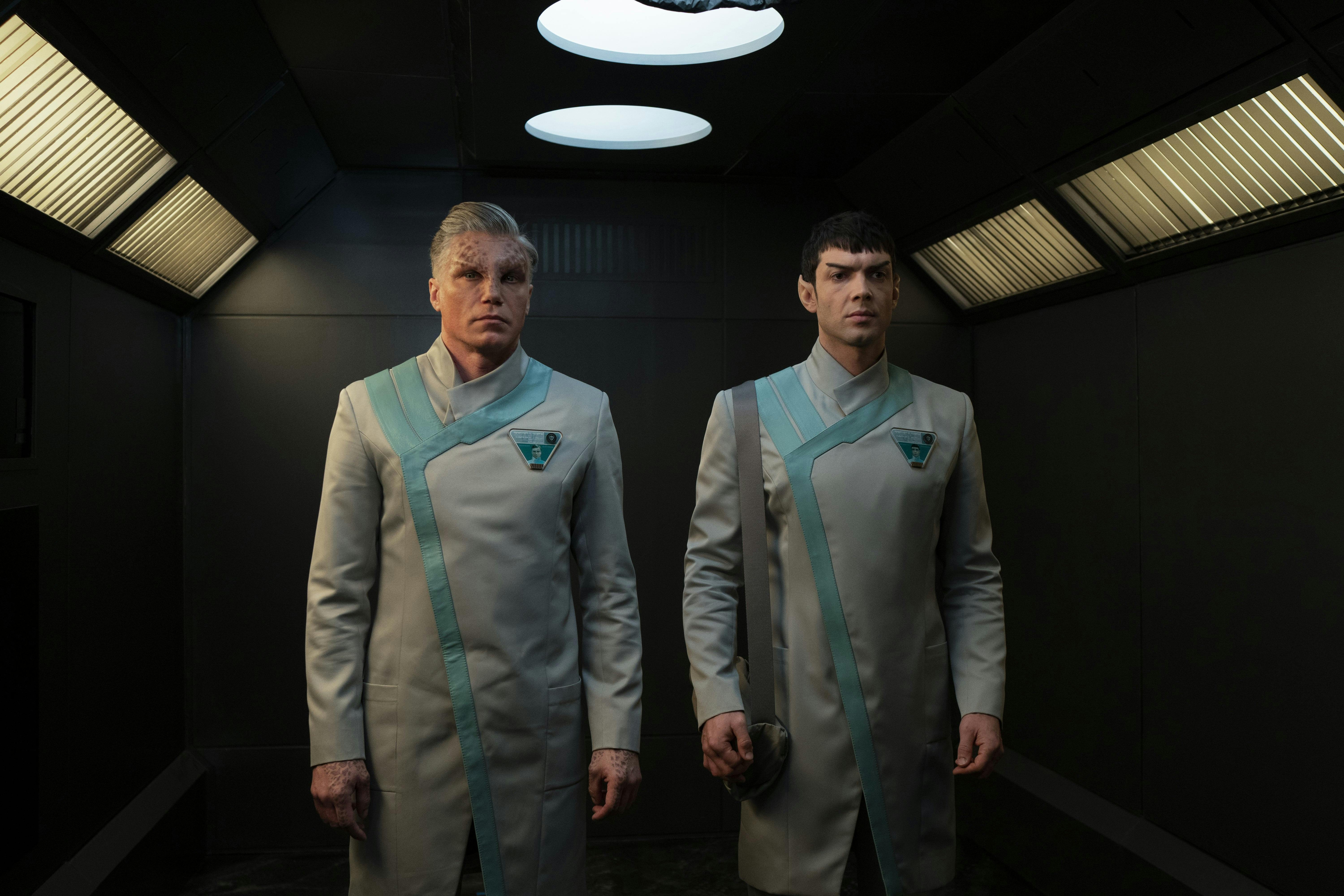
StarTrek.com
The parallels between SNW and The Day the Earth Stood Still begin to emerge in the first episode’s opening scenes, as the people of Kiley 279 report the appearance of an UFO above their planet. While the U.S.S. Archer may have a nacelle attached to its saucer, the sequence nevertheless heavily evokes the opening of the classic sci-fi movie.
The allusion is locked down by the subsequent sequence, which not only shows Pike watching the film as he cooks breakfast for himself and his companion, but also includes dialogue confirming he watches the movie about as frequently as William Riker visits Captain Jonathan Archer on the holodeck. As Pike watches the movie, we see snippets of the scene in which Klaatu delivers his climactic speech, including a meaningful shot of the faces of the humans listening to his words on the lawn surrounding the saucer.
This shot in The Day the Earth Stood Still plays an important role: it is a mirror image for the movie-viewing audience, who are also listening to Klaatu’s message. By showing the faces of the people in the movie giving their rapt attention to Klaatu, the distance between the crowd watching the film and the crowd on the Washington, DC lawn collapses.
In the third act of SNW’s pilot, after the away team has rescued Una and the other Starfleet officers, Pike requests the Kiley guards “take [him] to [their] leader.” From here, Pike fully accepts his place in the role occupied by Klaatu in The Day the Earth Stood Still: the extraterrestrial visitor tasked with delivering a message… and an ultimatum.
Pike’s Message
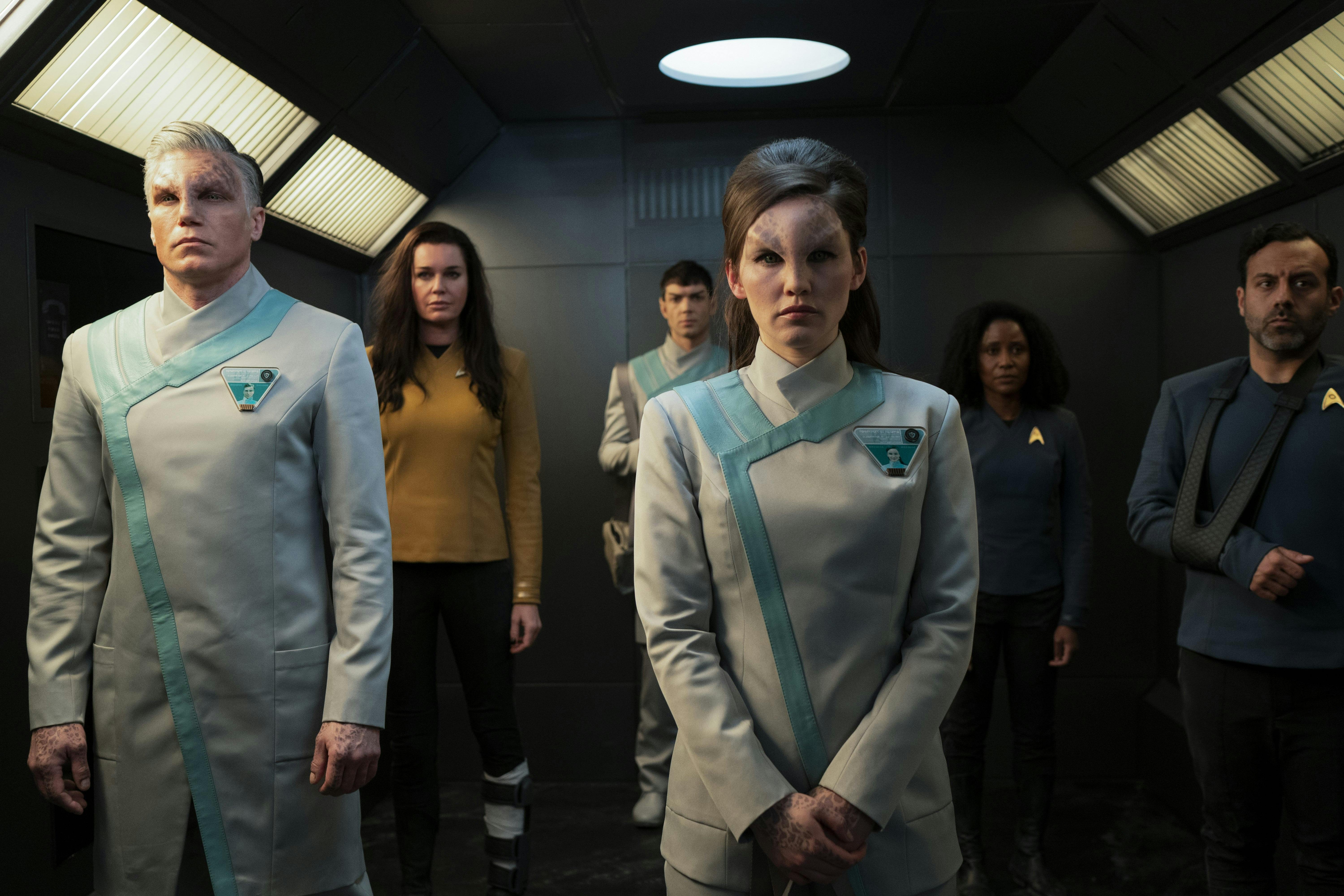
StarTrek.com
Pike uses the arrival of his “flying saucer” above Kiley 279 to seize the attention of the Kiley. Once a national broadcast is taking place, he appears in person to deliver his climactic speech. Just like the climax of The Day the Earth Stood Still, in which Klaatu’s message was directed towards the audiences both within and watching the movie, Pike’s message is clearly directed towards not just the Kiley, but also the Earth audience in 2022.
When they first arrived on Kiley 279, dialogue between Pike and Spock established the similarities between the state of the 23rd century Kiley society and the state of Earth society today, observing that the civil unrest recalled “Old Earth” and the United States of the 21st century. This comparison is driven home as Pike delivers his speech, and we see a recreation of the shot of the human crowd in The Day the Earth Stood Still, but with Kiley faces standing in for (but still representing) humans.
Just as Klaatu informs the people of Earth they are headed for destruction, Pike warns the people of Kiley 279 that they are hurling towards what appears to be a very dire fate indeed. However, while Klaatu’s companion Gort will be the source of Earth’s destruction in The Day the Earth Stood Still, the (soon-to-be-named) Prime Directive prevents Pike from enforcing any ultimatum on the people of Kiley. Nevertheless, it seems clear that the Kiley do not need help destroying themselves.
Pike delivers his own ultimatum: the Kiley can continue in their conflicts with one another, or they can unify in order to accomplish something greater: developing warp capabilities and joining the Federation.
The Day Kiley 279 Stood Still

StarTrek.com
In The Day the Earth Stood Still, Klaatu’s ultimatum is clear: humans must learn to live in peace or they will be destroyed. But on SNW, although Pike’s companion may speak in monotone, he is not a robot armed with the world destroying ability to enforce an ultimatum. Instead, Spock is a half-human half-Vulcan armed with logic.
And while the idea that the UFO is not supernatural but rather from advanced science does apply to the arrival of the Enterprise in SNW, the Enterprise goes one step further. While the Kiley represent humanity in the 21st Century and Pike represents humanity in the 23rd Century, both the speaker and the audience both represent us (a fact further driven home by Pike being disguised as a Kiley for part of the episode).
The Enterprise isn’t a messenger from above or from another civilization, the Enterprise is a messenger sent by ourselves. And while the ultimatum Pike offers cannot be enforced by a robotic police force, it is supported by the logic offered by Spock. Given the ultimatum is between destroying ourselves or using science to build a better world for everyone, there is no choice: only an obligation to commit to the latter.
A Strange New Hope

StarTrek.com
In the aforementioned commentary track to The Day the Earth Stood Still, Meyer points out that the peace “offered” by Gort isn’t exactly voluntary, but rather fascistic in nature. The response Wise has to Meyer is somewhat pessimistic, asking how the governments of the world could be persuaded to renounce violence except in the face of an overhanging existential threat.
By contrast, the ultimatum offered by Pike in SNW is characterized by hope. While the Enterprise may possess the firepower to dominate the people of Kiley 279, General Order One forbids Pike from enforcing his ultimatum in the way Gort enforces the one delivered by Klaatu. Instead of being motivated by their destruction, the Kiley are inspired by the aspirational aspects of the opposite side of the ultimatum, embodied by Pike and the rest of the glimpses of the Federation that they have received.
In some of the final scenes of the SNW pilot, we see the Kiley take inspiration from their photographs of the Archer and the Enterprise, beginning to reverse engineer the ships for their space program as they follow the example set by Pike. Once again, the Kiley can be considered a mirror for humanity, including steps we have already taken; consider, for example, that in 1976 Trekkies ensured the first NASA space shuttle was named Enterprise.
But will humanity’s future continue to parallel the progress made by the Kiley as they are inspired by the Federation’s example? SNW is showing us where we could go if we can avoid destroying ourselves and instead achieve unification; the kind of security we could achieve if we put aside factions, personal avarice, and war, and instead focused on science, personal growth, and exploration.
No wonder the Kiley find the Federation aspirational. Aren’t you inspired to follow that path, too?
